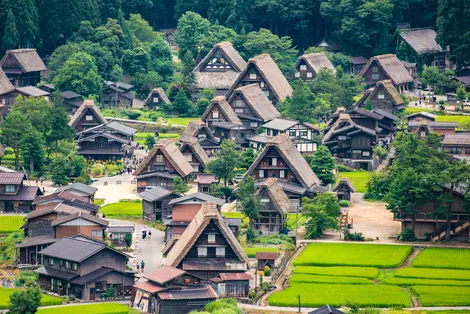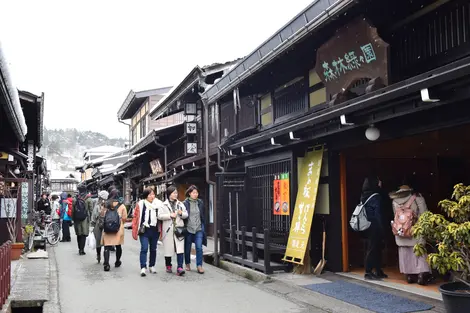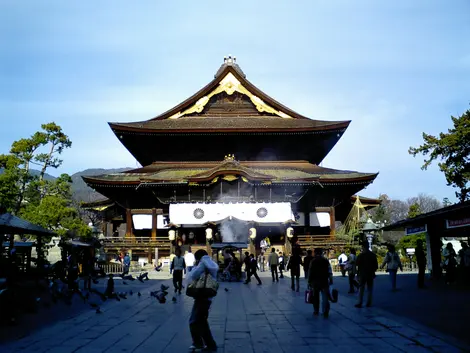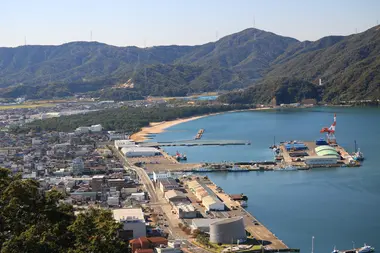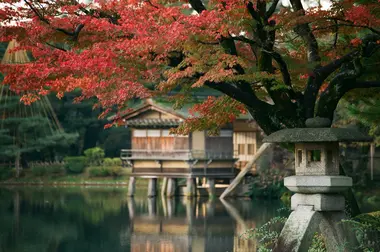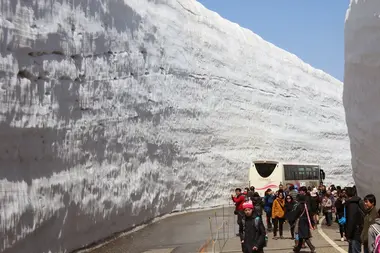Regional Rail Passes in the Japanese Alps

Explore the Japanese Alps with a regional pass!
Sectioning the main island of Honshu in two, the Japanese Alps are one of Japan's most beautiful regions. With gorgeous mountainous landscapes, lush forests, a rich traditional culture, and interesting sights to see, the Japanese Alps are an unmissable destination. Just a couple hours away from Tokyo, the region's best sights are best accessible by train, connecting cities such as Takayama, Matsumoto or Nagano. Explore the regional rail passes available in the Japanese Alps.
How to buy a Regional Pass for the Japanese Alps
The Chubu Region
Chubu translates to "middle section," and is dubbed so due to being centrally located on Honshu Island. Within Chubu are two of the prefectures that are fully landlocked, a rarity since Japan is an archipelago. These two prefectures are Gifu and Nagano, and both also happen to be some of the largest prefectures by landmass as well. When visiting an island nation like Japan, visiting an area with no coasts may seem counterintuitive, but what Gifu and Nagano lack in ocean-side beaches, they more than make up for in rich mountains, flowing rivers, deep valleys, and lush forests.
Gifu is home to one of Japan's most recogonized UNESCO World Heritage Sites, Shirakawago. Shirakawago is a small town made up of traditional thatch-roofed homes sitting at the base of the mountains. This village is associated with Gokayama in Toyama that also is home to these traditionally-built homes. Both of these locations are built within the proximity of Hakusan, one of Japan's three holy mountains. The area is especially beautiful during autumn, with rich hues of gold and burgundy leaves flowing through the landscape.
Gifu is also home to Takayama, one of the most charming towns within the region! Modest yet discovery-filled streets line the main river with great restaurants, sake breweries, cafes, and shops found throughout. Be sure to try the area's local Hida Wagyu beef, luxuriously marbled with buttery fat and balanced texture. Getting between Takayama and other prefectures in the Japanese Alps area is made easy with trains such as the Hida Limited Express!
Another prefecture heavily associated with the Japanese Alps is Nagano, famous for history and artistry just as much as it is for beautiful nature. Many of the prefecture's most eclectic destinations are easily accessible via the Hokuriku Shinkansen which departs from Tokyo Station. Karuizawa is a great day trip from the capital city, teeming with beautiful forests and elegant museums with a variety of themes.
Go up to Nagano City, the prefectural capital and see one of the country's most historically significant temples. Zenkoji Temple is at the center of the city, as the original township was built around it, and dates back to the 7th century. Also from Nagano Station in Nagano City, a bus or train can be taken out to Jigokudani Monkey Park, home to a fascinating group of snow monkeys that use the onsen hot springs to warm themselves during the winter.
Out to Matsumoto, the famous Matsumoto Castle stands as an icon of the region, surrounded by a moat and established upon a wide-ranging property with a park and shrine on the premises. Matsumoto is also the hometown of world-beloved artist Yayoi Kusama, well-known for her eccentric colors and polka-dot designs. The city's main art museum is home to a permanent collection of her works.
The Hokuriku Region
Nestled between the Sea of Japan and the mountain range of the Japanese Alps, Hokuriku is defined by gorgeous scenery and rich lands. Hokuriku, the region, is made up of the prefectures of Toyama, Ishikawa, and Fukui and is most conveniently connected to the capital city of Tokyo via the Hokuriku Shinkansen. This Shinkansen line was extended out to Tsuruga in Fukui Prefecture in March 2024, and passes through some of the most prominent destinations in central Japan, including Kanazawa, Kurobe Dam in Toyama, and Nagano.
Hokuriku is a paradise for nature lovers, home to two of Japan's holy mountains in the form of Hakusan in Ishikawa and Tateyama in Toyama (the last one the famous Mount Fuji), along with rolling peaks going throughout the entire region. Toyama in particular is blessed with these roaring ranges, and its name even translates to "rich mountain."
Toyama is also well-established for its glass art culture, with its glass art museum at the center of the capital city that simultneously serves as the main library. Outside of the main city in Toyama, the Alpine Route is a beloved attraction, going across the Japanese Alps in the area with the famous towering snow walls as a centerpiece.
Ishikawa prefecture's capital and largest city is Kanazawa, and it is a city that is best described as one that appreciates beautiful things. Largely untouched during World War II, the city's historic districts are largely preserved while simultaneously existing alongside contemporary sensibilities and aesthetics. One of Japan's three great gardens, Kenroku-en is right by the venerable Kanazawa Castle.
Fukui is largely notable for being home to the most dinosaur fossils excavated in Japan, with the country's most famous prehistoric museum being one of the prefecture's largest draws, home to many artifacts that stand still in time. Go out to Tsuruga in the same prefecture for rich coastal views and beautiful beaches, as well as prominent shrines and temples.
Hokuriku as a whole is highly regarded for its delicious seafood in particular, largely due to the deep, nutrient-rich waters that are especially prevalent during the wintertime. In Toyama, Amberjack is a delicacy, as are the unique "glass shrimp" (or shiroebi in Japanese) that are exclusively fished within Toyama Bay. Ishikawa is famous for one of Japan's most beloved delicacies, Nodoguro, or black throat sea perch, lauded for its rich flavor, fattiness, and well-balanced texture. Fukui is known above all other prefectures for crab, luxuriously sweet served both cooked and raw.
Why book your regional pass with Japan Experience?
Why get a regional pass?
Those visiting Japan have undoubtedly heard about the rail pass options available for traveling around Japan via train. As opposed to getting individual tickets, regional and Japan Rail Pass options allow for unlimited rides on certain train lines, removing the need for strict itineraries and planning and oftentimes saving holders money on their commuting expenses. The most wide-ranging and popular option for these passes is the National Japan Rail Pass, which allows for unlimited rides on Japan Railway-operated train lines throughout the country. This includes high-speed Shinkansen bullet trains as well as many express trains and local lines within cities.
However, for those who are concentrating their travels primarily in one region or location, regional pass options also offer great value and convenience! Many of these regional passes operate in the same way as the National Japan Rail Pass, however, they incorporate public transportation options in a designated area. There are regional passes for many locations throughout Japan, such as Kansai, Hakone, Kyushu, Shikoku, Tohoku, and more! Depending on your itinerary and what you plan to see, a regional pass may be best for you, for stress-free, all-encompassing transit to and throughout your favorite destinations in Japan!
Frequently Asked Questions about Regional Rail Passes








